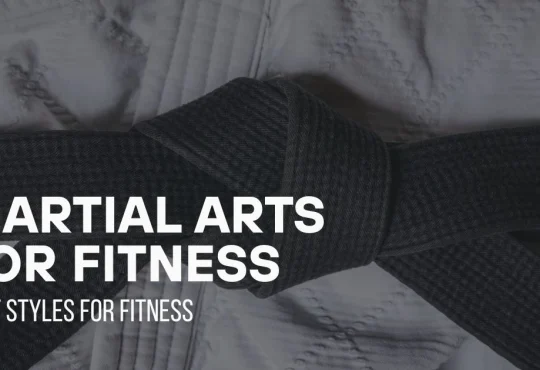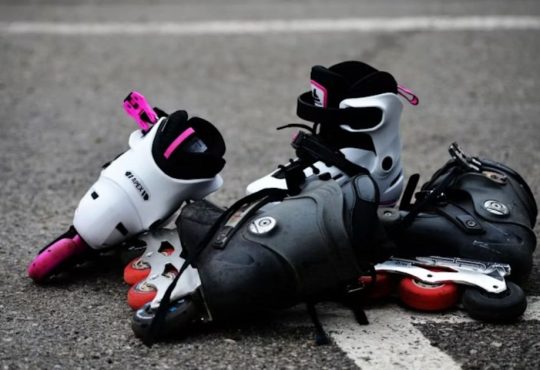BMX biking is not just a sport; it’s a vibrant culture that thrives on creativity, adrenaline, and community. From the bustling local parks to the intense competitions, BMX biking has captured the hearts of many enthusiasts. At its core, BMX biking revolves around tricks and techniques that push the boundaries of what can be done on two wheels. Mastering these skills is not only essential for improving one’s riding abilities but also for expressing individuality and creativity within the sport. This guide aims to introduce beginners to the essential tricks and techniques that will enhance their BMX experience and elevate their skills.
Essential Safety Gear
Before diving into the exciting world of BMX tricks, it’s crucial to prioritize safety. The thrill of riding and performing tricks can be exhilarating, but safety gear is a non-negotiable aspect of the sport. Here are the key components of safety gear every beginner should invest in:
• Helmets: A quality helmet is the most critical piece of safety equipment. Choose a helmet specifically designed for BMX riding that fits snugly without being uncomfortable. Look for a helmet that meets safety standards, providing adequate protection for your head during falls.
• Pads: Knee and elbow pads are essential for protecting your joints during crashes. These pads absorb impact and prevent scrapes and bruises. Many beginners find comfort in wearing padded shorts as well, providing extra protection for the hips and tailbone.
• Protective Clothing: While pads are crucial, wearing appropriate clothing is also important. Loose-fitting clothing allows for ease of movement, but it’s beneficial to choose materials that provide some durability to withstand falls. Consider wearing long sleeves and pants to protect against scrapes and abrasions.
• Footwear: Proper footwear can greatly influence your riding experience. Look for flat-soled shoes with good grip to ensure you maintain control over your pedals. Avoid shoes with excessive cushioning, as they can hinder your ability to feel the bike.
• Safety First: It cannot be stressed enough that safety should always be your top priority. Before attempting any new tricks, ensure you’re wearing your safety gear. Remember, falling is part of the learning process in BMX, but the right gear can make all the difference.
Basic BMX Bike Setup
A well-set-up BMX bike can significantly enhance your riding experience and trick performance. Understanding the components of your bike and how to adjust them for your comfort is key to becoming a proficient rider.
• Frame and Fork: The frame is the backbone of your BMX bike, determining its strength and handling. Choose a frame size that suits your height. The fork should also be compatible with your frame and designed to handle the type of riding you intend to do.
• Tires: Tire pressure plays a crucial role in performance. Check your tire pressure regularly; it should typically be between 30 to 50 psi, depending on your weight and riding style. Higher pressure makes for faster riding but can be less forgiving on jumps and tricks.
• Seat Height: The seat height should be adjusted so that when you sit on the bike, your feet can comfortably reach the ground. This height will allow for better balance and control when performing tricks.
• Handlebars: Handlebars should be positioned at a comfortable height, allowing you to maintain an upright posture while riding. Adjust them to a height where you feel most balanced and can easily maneuver the bike.
• Brakes: Depending on your riding style, you may choose to ride with or without brakes. If you’re just starting, consider having brakes installed for better control. Ensure that they are properly adjusted for responsiveness without being overly tight.
A well-maintained bike will improve your overall experience and enable you to focus on mastering tricks rather than worrying about equipment issues.
Fundamental Riding Techniques
Before diving into tricks, it’s essential to master some fundamental riding techniques. These foundational skills are vital for building confidence and stability on the bike.
Balancing
Learning to balance is the cornerstone of BMX riding. Start by practicing riding in a straight line, focusing on keeping your weight centered over the bike. As you gain confidence, try riding with one hand, then both hands off the handlebars.
Pedaling
Proper pedaling technique is crucial for maintaining speed and control. Use the ball of your foot on the pedals, and avoid pressing down too hard to maintain fluid motion. Practice shifting your weight while pedaling to enhance control.
Braking
Understanding how to brake effectively is essential for safety. Use both the front and rear brakes together to come to a smooth stop. Practice braking while riding at various speeds to gauge how your bike responds.
These fundamental techniques will serve as the building blocks for your BMX skills, preparing you for more advanced tricks and maneuvers.
Beginner Tricks to Try
Once you’ve mastered the basics, it’s time to start exploring some beginner tricks that will add excitement to your BMX experience. Here are a few tricks to get you started:
Bunny Hop
The bunny hop is a foundational trick that allows you to jump off the ground with both wheels. To perform a bunny hop, begin by riding at a moderate speed. Compress your bike by bending your knees and then pull up on the handlebars while simultaneously pushing down on the pedals. As you lift both wheels off the ground, keep your body centered and land smoothly.
Manual
The manual is a trick that involves riding on the back wheel without pedaling. Start by gaining a bit of speed and shifting your weight backward while pulling up on the handlebars. Keep your front wheel up by finding the right balance point. Practice holding the manual for longer distances as you gain confidence.
Wheelie
The wheelie is another classic trick that lifts the front wheel off the ground while maintaining balance. Begin by riding at a steady speed. Shift your weight back and pull up on the handlebars while simultaneously pedaling hard. Use your rear brake to help maintain balance and control. Practice this trick in a safe area until you feel comfortable.
These beginner tricks will not only enhance your skills but also build your confidence as you progress in BMX riding.’
Progressing to Intermediate Tricks
As you gain confidence and experience with beginner tricks, you may feel ready to tackle more advanced maneuvers. Progressing to intermediate tricks will challenge your skills and enhance your BMX repertoire.
Tabletop
The tabletop is a stylish trick that involves lifting your bike sideways during a jump. Start by mastering your jumps and gaining height. As you reach the peak of your jump, shift your weight to one side and extend the opposite leg while turning your handlebars in the same direction. This will create the tabletop effect. Practice this trick gradually to ensure proper technique and control.
Barspin
The barspin is a trick that involves spinning the handlebars while in the air. To perform a barspin, initiate a jump and then pull up on the handlebars to get some height. As you’re in the air, use your hands to spin the bars in front of you, keeping your body compact. Catch the bars as you land. This trick requires practice, but it’s a crowd-pleaser once mastered.
As you progress, challenge yourself to combine tricks and develop your own unique style. Don’t rush the learning process; mastering these intermediate tricks takes time and dedication.
Importance of Practice and Patience
The journey of learning BMX tricks requires consistent practice and a great deal of patience. Mastering new techniques and tricks doesn’t happen overnight, so it’s crucial to set realistic goals for your progress. Celebrate small achievements along the way to keep your motivation high.
Create a practice schedule that allows for consistent riding while also incorporating rest days. Rest is essential for muscle recovery and preventing burnout. Additionally, consider finding a practice buddy or joining a local BMX community to share experiences, tips, and encouragement.
Remember that falling is part of the learning process. Each fall provides an opportunity to learn and improve. Stay positive and focused on your progress, and don’t hesitate to seek advice from more experienced riders.
Resources for Learning
To further enhance your BMX skills, take advantage of various resources available to beginners. Online tutorials can provide valuable insights and techniques for mastering specific tricks. Websites and YouTube channels dedicated to BMX often feature step-by-step guides from experienced riders.
Joining local BMX clubs or communities can also provide essential support and camaraderie. Connecting with fellow riders allows you to share experiences, tips, and techniques. Many clubs host practice sessions and workshops, giving you the chance to learn from more seasoned riders.
Don’t overlook the value of instructional videos, where you can observe techniques in action. Watching how others execute tricks can offer valuable insights and inspire you to try new things.
Conclusion
BMX biking is a thrilling sport that combines athleticism, creativity, and a strong sense of community. By mastering tricks and techniques, beginners can enhance their skills and develop a deeper connection to the sport. Prioritizing safety gear, understanding bike setup, and practicing fundamental riding techniques are crucial steps in becoming a proficient BMX rider.
As you progress from beginner tricks to intermediate maneuvers, remember to embrace the learning process with patience and persistence. Utilize the wealth of resources available to you and engage with the BMX community for support. Ultimately, BMX biking offers a unique outlet for creativity and self-expression, and every trick you master brings you closer to fully experiencing the thrill of the ride. So gear up, hit the track, and enjoy the journey of becoming a skilled BMX rider!




